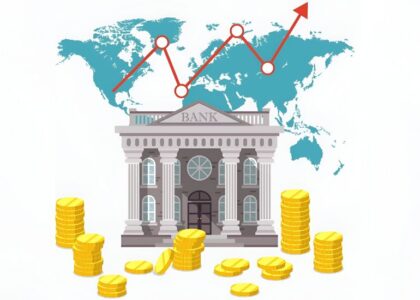In the realm of high-risk investing, where the thrill of substantial returns meets the daunting challenge of formidable risks, navigating the future demands strategic foresight.
Guided by the seasoned insights of financial experts like Someshwar Srivastav, we peer into a landscape shaped by transformative technologies, global interconnectivity, and evolving ethical considerations.
The future beckons with unprecedented opportunities and challenges, where prudent technology integration, a nuanced understanding of global events, and an adept response to regulatory shifts will define successful high-risk investors.
Join us in exploring the trends and predictions that promise to shape the thrilling yet complex future of high-risk investing.
1. The Rise of Alternative Investments
Someshwar Srivastav, a respected figure in the financial industry, points towards the rising prominence of alternative investments. Traditionally, high-risk investing was synonymous with stocks and bonds.
However, in the coming years, we can expect a surge in interest towards alternative assets such as cryptocurrencies, private equity, and venture capital. These unconventional avenues offer unique opportunities for high returns, albeit with a higher level of risk.
2. Technological Disruption in Financial Markets
Technology is reshaping the financial landscape at an unprecedented pace. Artificial intelligence, blockchain, and data analytics are becoming integral tools for investors seeking an edge in high-risk markets.
Staying ahead of technological advancements is important, as they can be a game-changer in identifying investment opportunities and managing risks effectively.
3. The Impact of Global Events on High-Risk Investments
Global events, whether geopolitical tensions or public health crises, profoundly impact financial markets. Investors engaging in high-risk ventures must be more vigilant than ever, closely monitoring global developments and adapting their strategies accordingly.
The ability to navigate and capitalize on market volatility will be a crucial skill in the future of high-risk investing.
4. Environmental, Social, and Governance (ESG) Investing
A notable shift towards responsible investing has been evident in recent years, and this trend is expected to intensify in high-risk investment circles. The growing importance of ESG criteria in decision-making processes.
Companies with strong ESG profiles are likely to be favoured by high-risk investors, as sustainability and ethical practices become key considerations alongside financial performance.
5. Regulatory Changes and Compliance Challenges
High-risk investing has always been subject to stringent regulations, but the landscape constantly evolves. Investors must navigate a maze of regulatory changes, compliance challenges, and increased scrutiny.
Staying abreast of legal developments and ensuring strict adherence to compliance standards will be paramount in mitigating risks associated with regulatory uncertainties.
6. Diversification Strategies
Diversification has long been hailed as a risk management strategy, and Someshwar Srivastav underscores its continued relevance in the future of high-risk investing.
While diversifying across asset classes remains crucial, investors may increasingly explore geographical diversification to mitigate risks associated with regional economic fluctuations.
7. The Role of Robo-Advisors and Algorithmic Trading
Advancements in technology have given rise to robo-advisors and algorithmic trading, which can execute trades at speeds impossible for human traders.
An increased reliance on these automated tools in high-risk investing. However, he also highlights the importance of maintaining a balance and not completely relinquishing human oversight, as algorithms may not always account for unpredictable market events.
8. Behavioural Finance in High-Risk Investing
Understanding the psychological aspects of investing is gaining prominence in high-risk markets. Behavioural finance, which explores how emotions and cognitive errors influence investment decisions, will significantly shape investment strategies.
Successful high-risk investors must master the art of emotional discipline and cognitive resilience.
Conclusion
As we peer into the crystal ball of high-risk investing, guided by the insights of financial experts like Someshwar Srivastav, it becomes clear that the future is both challenging and promising.
In navigating these trends and predictions, investors must remain adaptable, informed, and agile. High-risk investing is not for the faint of heart. Still, for those who can embrace uncertainty, leverage technology, and stay attuned to the ever-changing market dynamics, the future holds the promise of lucrative opportunities amidst the risks.









